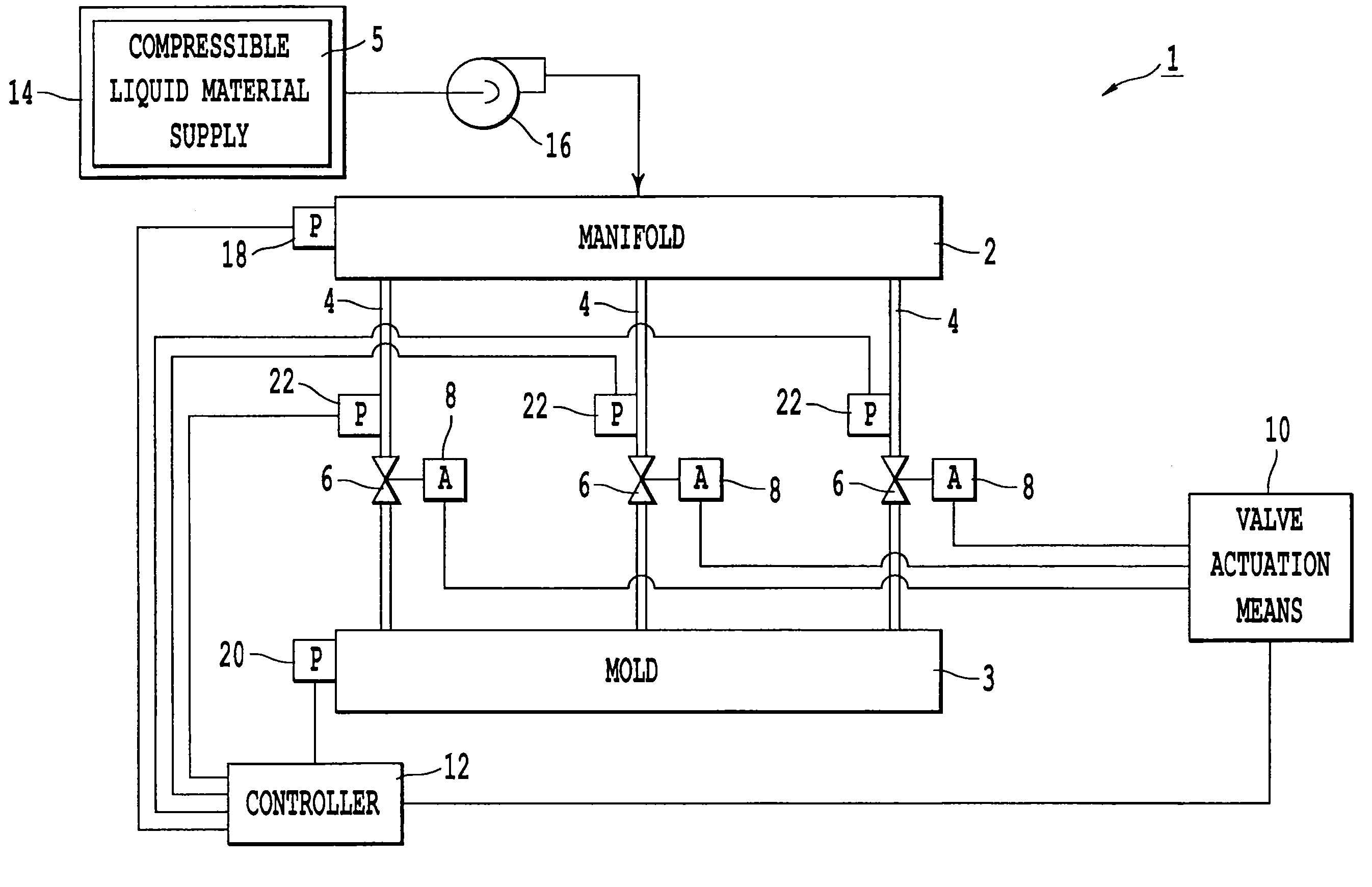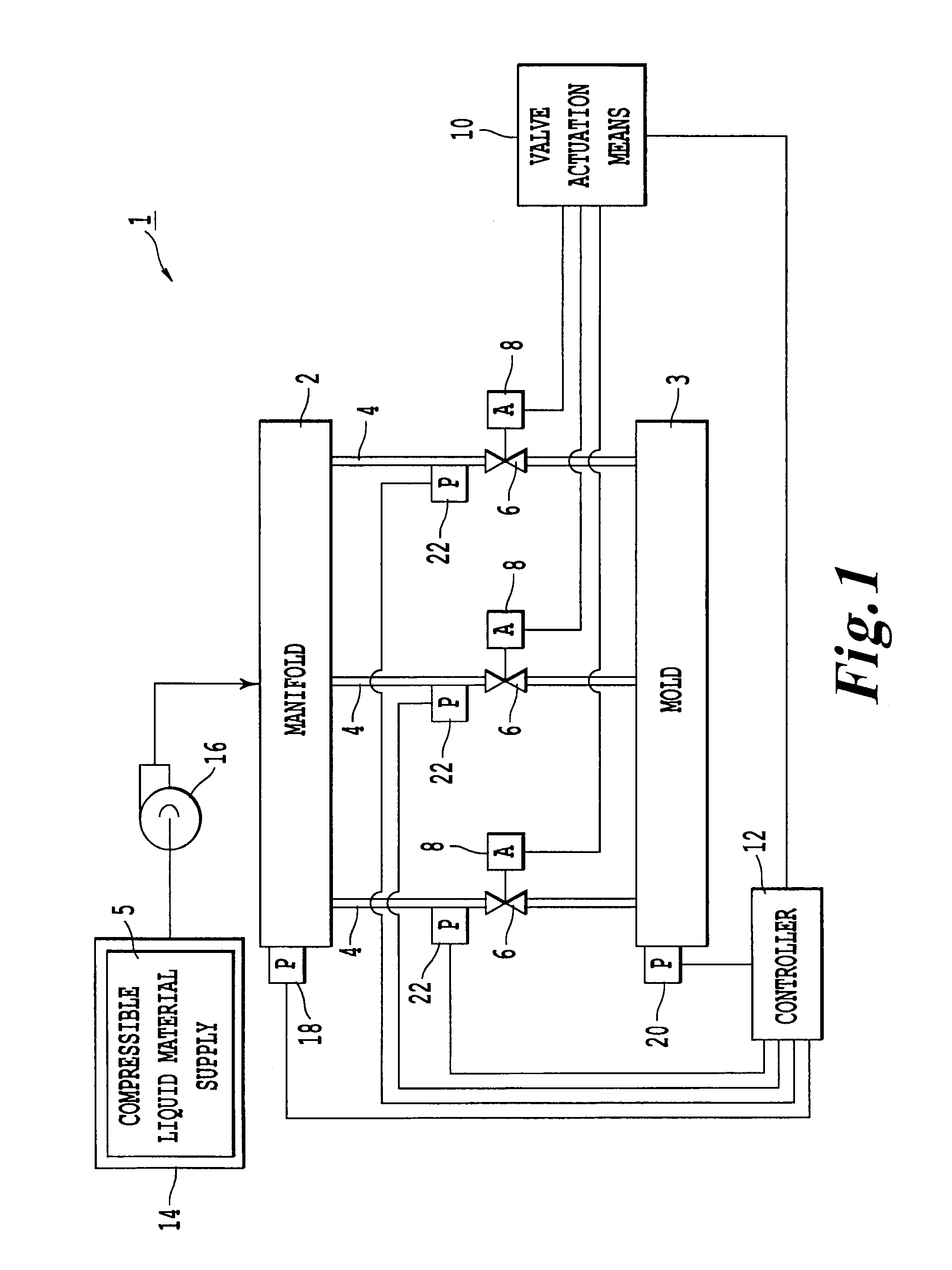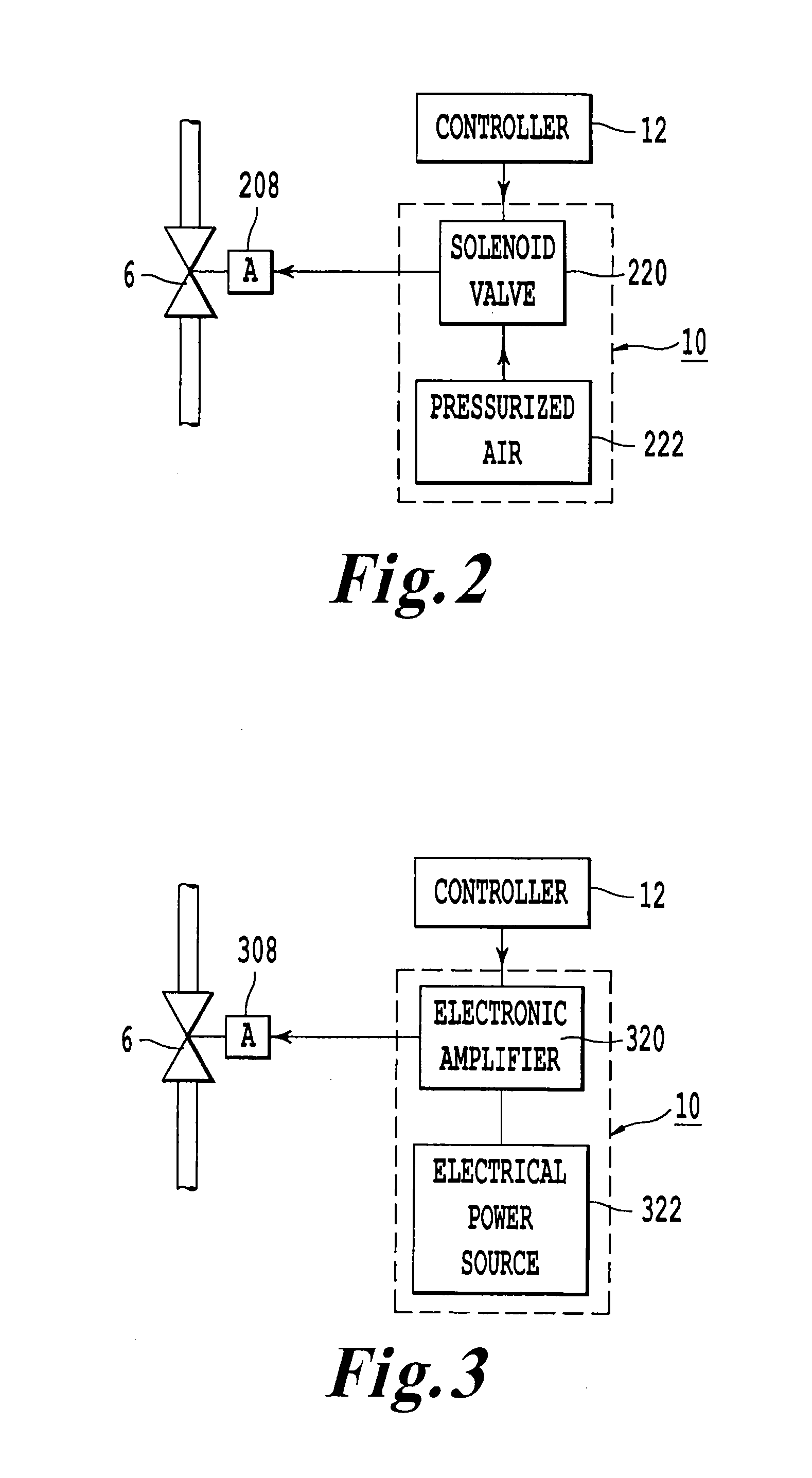Apparatus and method for filling a mold with a liquid material
- Summary
- Abstract
- Description
- Claims
- Application Information
AI Technical Summary
Benefits of technology
Problems solved by technology
Method used
Image
Examples
Embodiment Construction
[0049]Referring now to the drawings, wherein like reference numerals designate identical or corresponding parts throughout the several views.
[0050]FIG. 1 shows an exemplary embodiment of an apparatus 1 for filling a mold 3 with a compressible liquid material 5. The apparatus 1 includes a manifold 2 that may be in fluid communication with a mold 3 through a plurality of runners 4. Although FIG. 1 shows three runners 4, the apparatus 1 may include any number of runners 4 greater than or equal to two. Further, the apparatus 1 may include one or more molds 3 in fluid communication with the same manifold 2, where each mold may include one or more mold cavities therein. Moreover, a single mold 3 cavity may be in fluid communication with one or more runners 4, and a single runner 4 may be in fluid communication with one or more mold 3 cavities.
[0051]The apparatus 1 further includes at least one valve 6 disposed in the at least one runner 4, where each valve 6 is in fluid communication with...
PUM
| Property | Measurement | Unit |
|---|---|---|
| Fraction | aaaaa | aaaaa |
| Time | aaaaa | aaaaa |
| Time | aaaaa | aaaaa |
Abstract
Description
Claims
Application Information
 Login to View More
Login to View More - R&D
- Intellectual Property
- Life Sciences
- Materials
- Tech Scout
- Unparalleled Data Quality
- Higher Quality Content
- 60% Fewer Hallucinations
Browse by: Latest US Patents, China's latest patents, Technical Efficacy Thesaurus, Application Domain, Technology Topic, Popular Technical Reports.
© 2025 PatSnap. All rights reserved.Legal|Privacy policy|Modern Slavery Act Transparency Statement|Sitemap|About US| Contact US: help@patsnap.com



